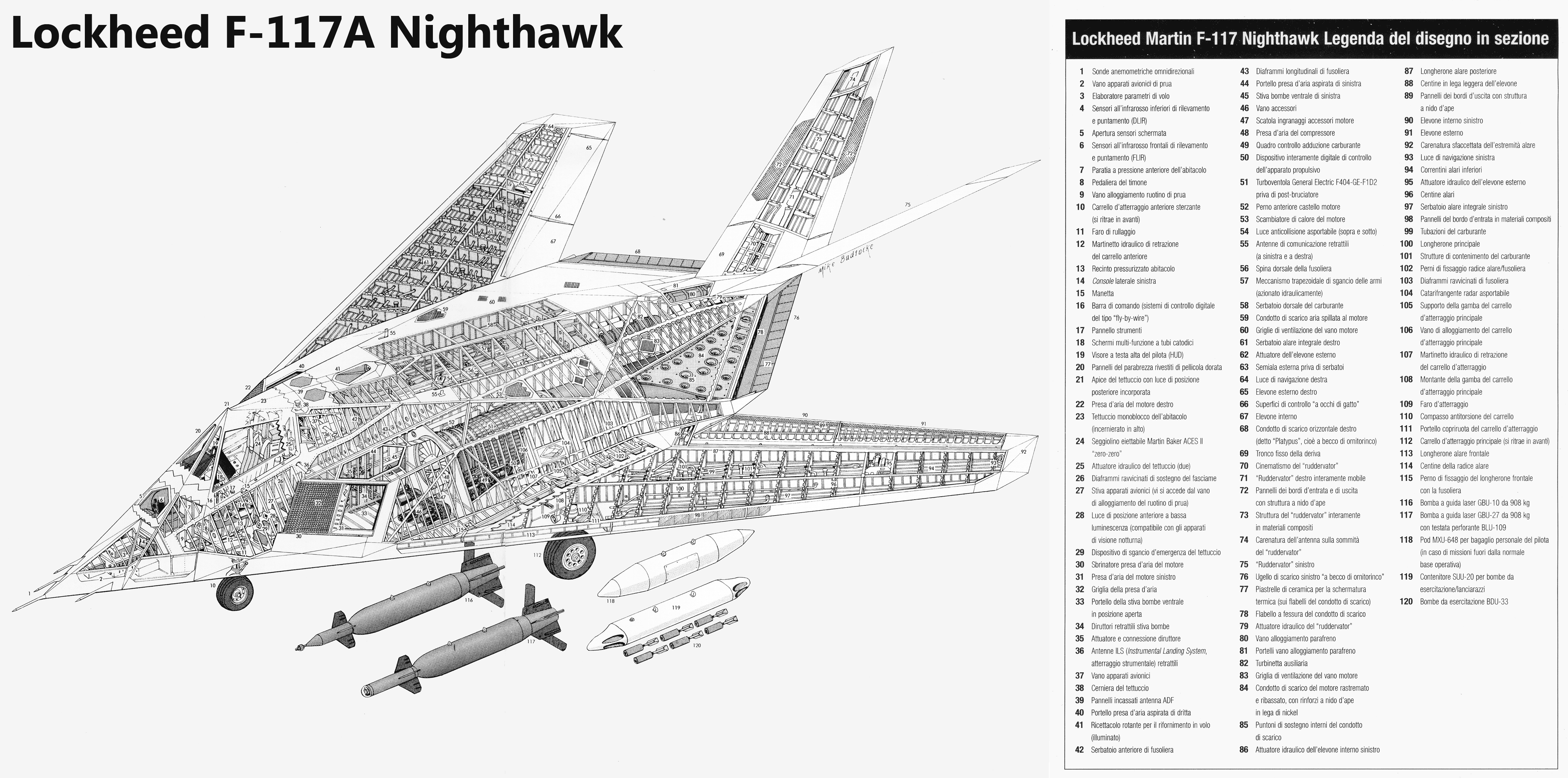Lockheed F-117 Nighthawk (first operational stealth aircraft)




The Lockheed F-117 Nighthawk is a single-seat, twin-engine stealth ground-attack aircraft formerly operated by the United States Air Force (USAF) developed from the Have Blue technology demonstrator and produced by Lockheed's Skunk Works. It is the first operational aircraft to be designed around stealth technology. The maiden flight of the F-117 happened in 1981 and the aircraft achieved initial operating capability status in October 1983.The Nighthawk spent much of its early service life shrouded in secrecy, until it was "acknowledged" and unveiled to the world in November 1988.
The F-117 was widely publicized for its role in the Gulf War of 1991. It was commonly referred to as the "Stealth Fighter", although it was a strictly ground-attack aircraft. F-117s took part in the conflict in Yugoslavia where one was shot down by a surface-to-air missile (SAM) on 27 March 1999, the only Nighthawk to be lost in combat. The Air Force retired the F-117 on 22 April 2008, primarily due to the fielding of the F-22 Raptor. Sixty-four F-117s were built, 59 of which were production versions with the other five being demonstrators/prototypes.
Design
The F-117's unusual design surprised and puzzled experienced pilots. It is shaped to deflect radar signals and is about the size of an F-15 Eagle. The single-seat Nighthawk is powered by two non-afterburning General Electric F404 turbofan engines, and has quadruple-redundant fly-by-wire flight controls. It is air refuelable. To lower development costs, the avionics, fly-by-wire systems, and other parts are derived from theGeneral Dynamics F-16 Fighting Falcon, McDonnell Douglas F/A-18 Hornet and McDonnell Douglas F-15E Strike Eagle. The parts were originally described as spares on budgets for these aircraft, to keep the F-117 project secret.The F-117 has a radar signature of about 0.025 m2 (0.269 sq ft). Among the penalties for stealth are lower engine power thrust, due to losses in the inlet and outlet, a very low wing aspect ratio, and a high sweep angle (50°) needed to deflect incoming radar waves to the sides. With these design considerations and no afterburner, the F-117 is limited to subsonic speeds.
The F-117A carries no radar, which lowers emissions and cross-section, and whether it carries any radar detection equipment is classified.The aircraft is equipped with sophisticated navigation and attack systems integrated into a digital avionics suite. It navigates primarily by GPS and high-accuracy inertial navigation. Missions are coordinated by an automated planning system that can automatically perform all aspects of an attack mission, including weapons release. Targets are acquired by athermal imaging infrared system, slaved to a laser that finds the range and designates targets for laser-guided bombs. The F-117A's split internal bay can carry 5,000 lb (2,300 kg) of ordnance.
The F-117A's faceted shape (made from 2-dimensional flat surfaces) resulted from the limitations of the 1970s-era computer technology used to calculate its radar cross-section. Later supercomputers made it possible for subsequent planes like the B-2 bomber to use curved surfaces while staying stealthy, through the use of far more computational resources to do the additional calculations needed.
General characteristics
- Crew: 1
- Length: 65 ft 11 in (20.09 m)
- Wingspan: 43 ft 4 in (13.20 m)
- Height: 12 ft 9.5 in (3.78 m)
- Wing area: 780 ft² (73 m²)
- Empty weight: 29,500 lb (13,380 kg)
- Loaded weight: 52,500 lb (23,800 kg)
- Powerplant: 2 × General Electric F404-F1D2 turbofans, 10,600 lbf (48.0 kN) each
Performance
- Maximum speed: Mach 0.92 (617 mph, 993 km/h)
- Cruise speed: Mach 0.92
- Range: 930 NM (1720 km)
- Service ceiling: 45,000 ft (13,716 m)
- Wing loading: 65 lb/ft² (330 kg/m²)
- Thrust/weight: 0.40


Comments
Post a Comment